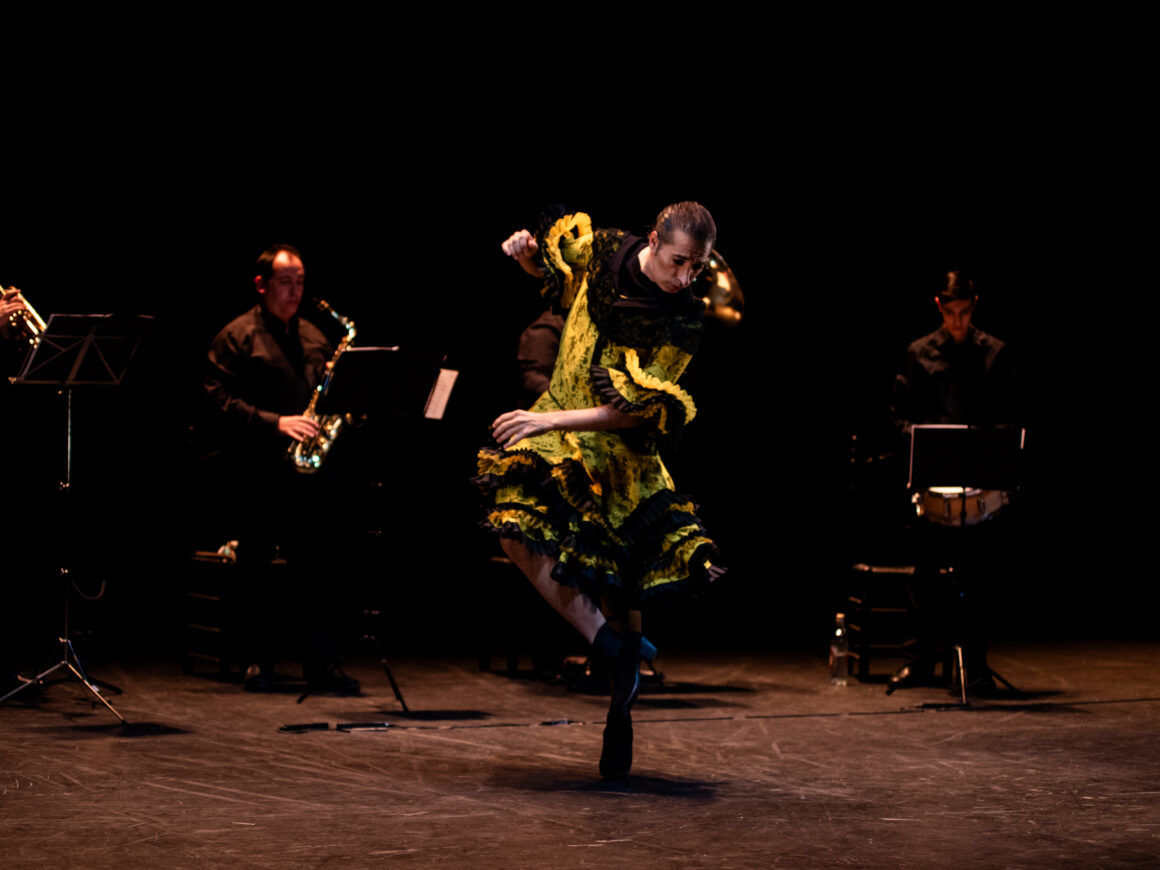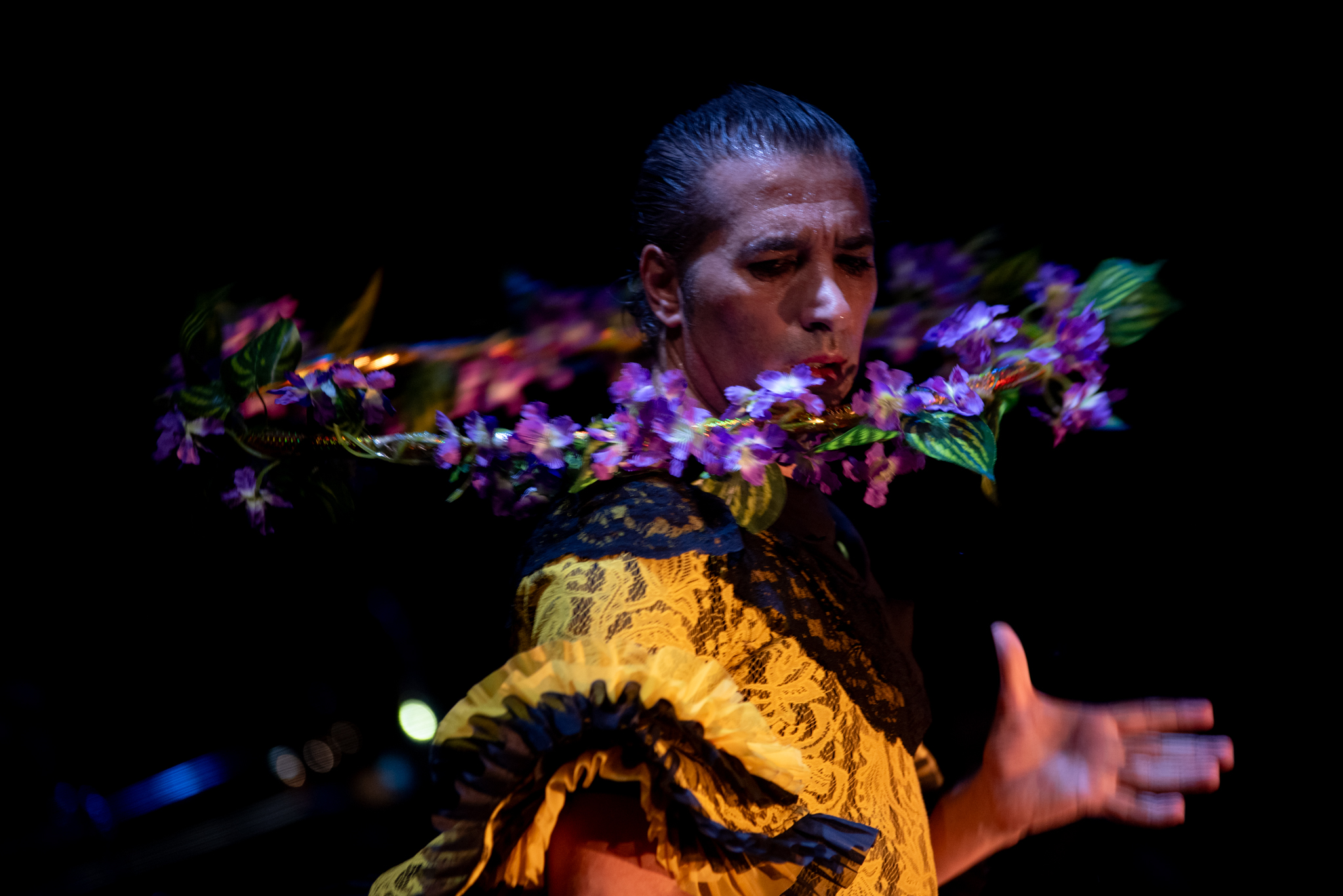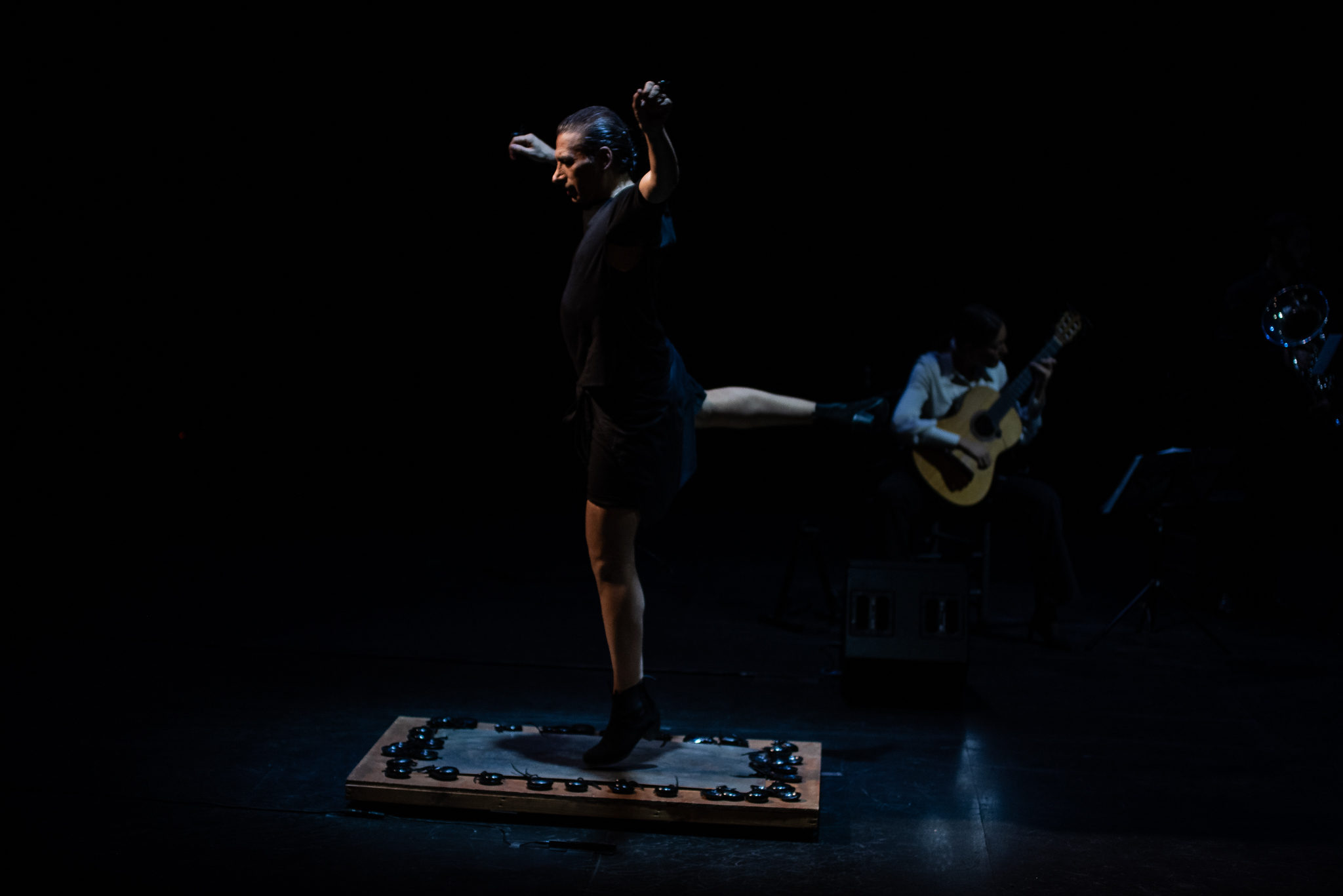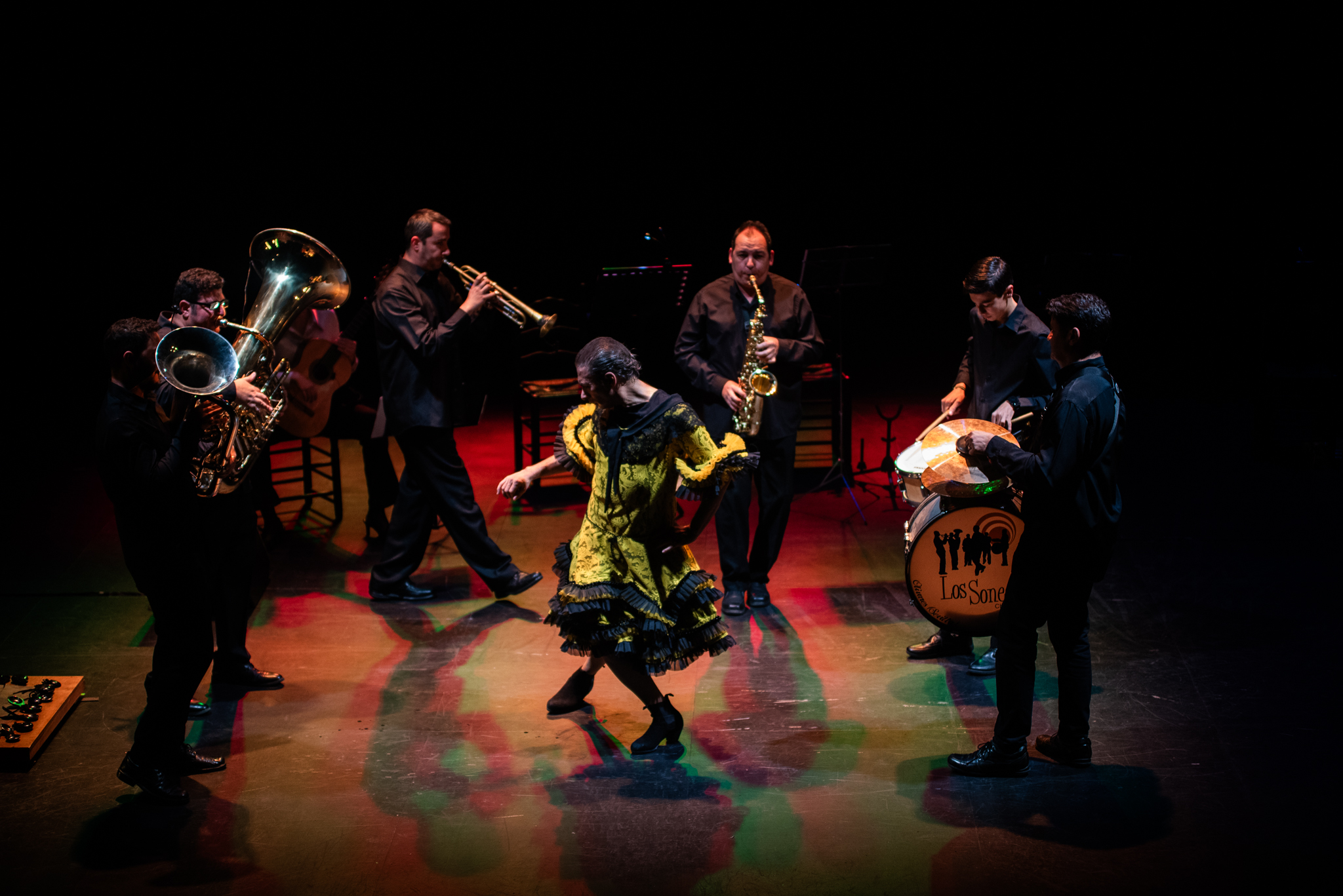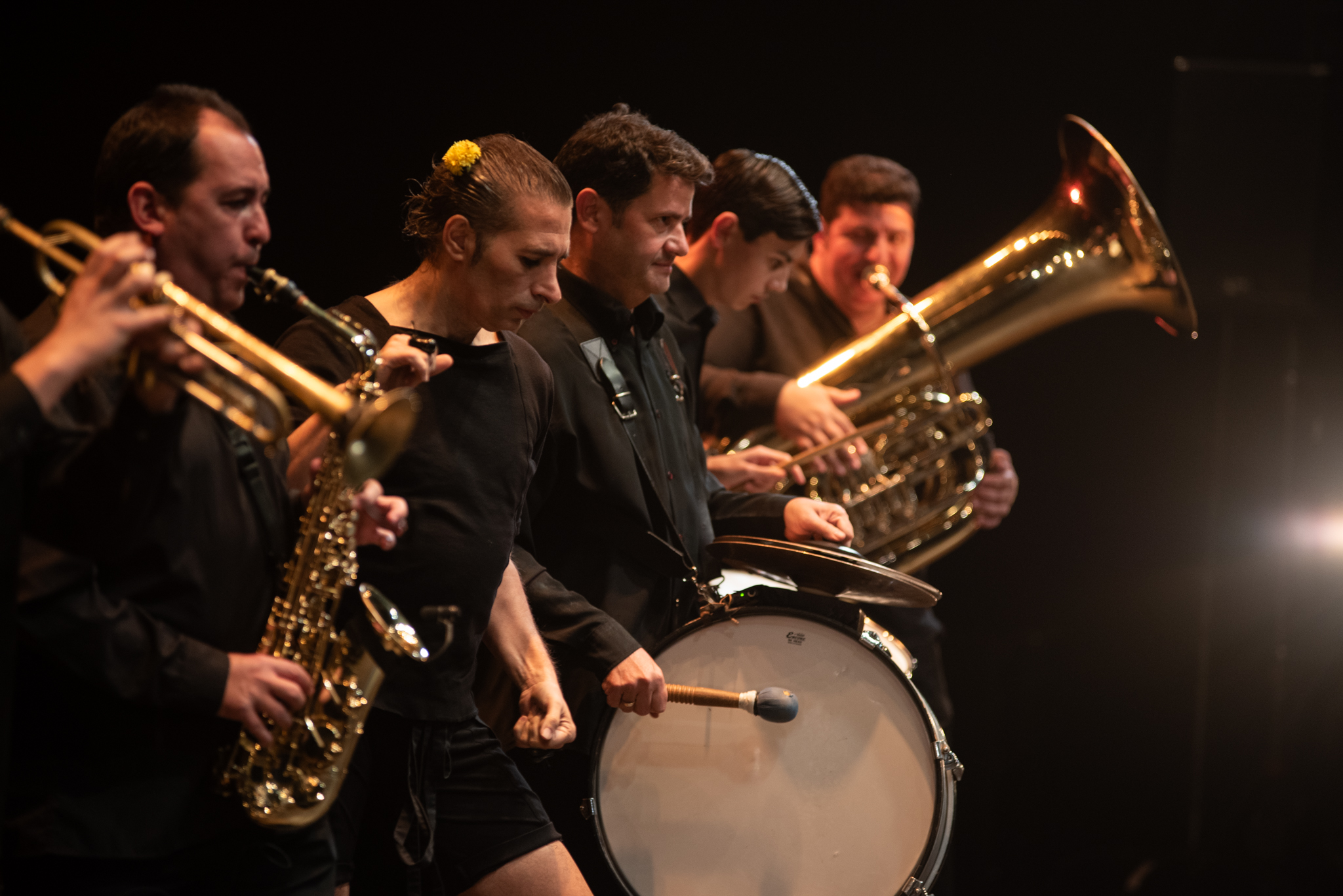Israel Galván
Sevillanas Solteras
concept and choreography
Israel Galván
with
Israel Galván (baile)
Maria Marín (cante y guitar)
Los Sones (charanga)
lights Valentin Donaire
costumes Micol Notarianni
make up design Chema Noci
music consultant Miguel Álvarez-Fernández
sound and technical director Pedro León
management Rosario Gallardo
production
IGalván Company
coproduced by Teatro Central de Sevilla
in collaboration with
INAEM-Instituto Nacional de las Artes Escénicas y de la Música
Israel Galván for sevillanas. A world-class creation in which the genius explores his roots. Awards have ceased to be important for the artist Israel Galván many years ago. But these recognitions are important for children, and during his childhood Galván - heir, as is known, to a dynasty of dancers who very early instilled the craft of dancing in him - collected almost all the awards imaginable. To such an extent that his colleagues sometimes call him, simply, "Premio" ('Award' in Spanish). However, Israel Galván never managed to win any of the numerous sevillanas competitions to which his parents entered him. In fact, Galván admits without too much shame that he does not know how to dance sevillanas. What's more, he declares himself incapable of dancing - competently - a duet, in any style or form. Perhaps that is why the dancer tends to simultaneously adopt multiple characters, gestures and identities within his body? This new work forces the “schizophrenic” Galván to coexist with the different roles that are activated when dancing sevillanas (at the fair in his city, at a school in Japan, at any international competition...). To coexist... Or, rather, to compete, to fight, to challenge each other (although, as we know, "the real fight is with the duende"). The feminine and the masculine are outlined in an agonizing and antagonistic way in this dance of ancestral reminiscences - this was already seen by the mythical Ocaña, always trapped between Dionysus and Icarus. Seduction and enchantment are manifested here in the most toxic and nineteenth-century senses imaginable... But, yes, their different polarities merge into a chimera, a hybrid, a monster. This explains the attraction that Galván felt from his youth, in the context of the Seville Fair, for the "Los Formalitos" booth, a clearing within that infernal forest - the image of hundreds of raised dancing arms also became deeply and early fixed in Galván's memory - so charged with fear of the different. In that booth, so similar in its unprejudiced spirit to the one that Tod Browning brought to the cinema in 1932 or even to the Mos Eisley cantina that appears in "Star Wars" - due to the diverse clientele - Israel Galván feels at home. In this work Galván does not pervert the sevillanas - this is something that he has never done with flamenco either. Rather, he reminds us of the congenital impurity of these practices, resulting - although some try hard to forget it - from hybridization, from crossbreeding and even from the cult of bastardy. That is why the charanga virus can easily penetrate these sevillanas or, in their celebration of drunkenness, one can hear something that is not exactly song, nor even words (although it is, clearly, sound poetry), but that sometimes reminds one of Raffaella Carrâ or other hymns such as "Yellow Tractor" or the even more classic "I Will Survive". If Dickens' Victorian tale confronted us with the specters of Christmases past, present and future, the baroque single sevillanas take us back to a spring that never ceases, to the permanent party, to the spirit of fun and to those puppets to whom the Velvet Underground dedicated "All Tomorrow's Parties". Galván does not dance for the people, but for the populace. That is why his dance continues to be subversive, and why this new work is, in its entirety, a snub. (Miguel Álvarez-Fernández)
tour dates
Spain Teatro Central Sevilla – 15-16 november 2024 (world opening)
©Claudia Ruiz Caro

